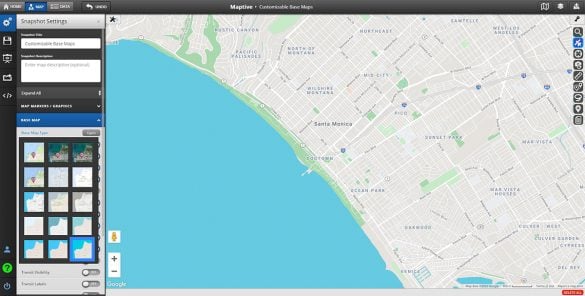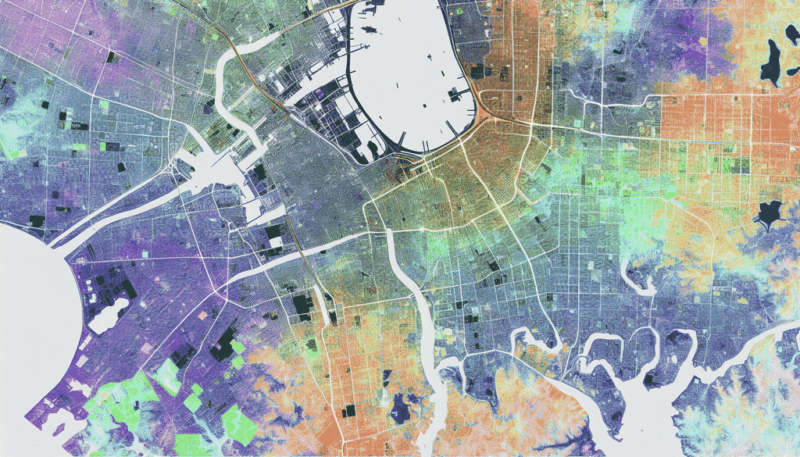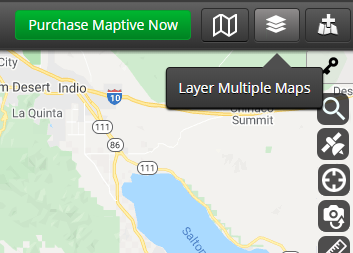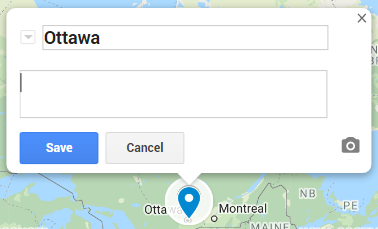
At its core, a base map serves as the foundational canvas upon which layers of additional data can be overlaid, offering a comprehensive visual context for geographic information. In simpler terms, it provides the essential background imagery and geographical features, such as roads, landmarks, and terrain, allowing users to better understand and interpret the layers of information superimposed on it.
Table of Contents

Base maps function as the compass of the digital mapping world, providing users with a reference point and a comprehensive overview of geographical data. Serving as a reference map, they meticulously illustrate key features such as buildings, rivers, and boundaries, offering essential context for users navigating spatial information. As foundational layers for displaying geographic data, base maps play a pivotal role in facilitating a deeper understanding through visualization.
Base maps enable users to orient themselves within a given geographical context. Whether it’s planning a route, analyzing regional patterns, or understanding the distribution of resources, base maps serve as the initial canvas upon which layers of additional data can be integrated.
Maptive goes beyond the basics, providing users with customizable options to tailor the appearance of their base maps according to specific needs. The ability to control labels, colors, and styles, coupled with the flexibility of toggling satellite imagery, ensures that users can mold their base maps into powerful tools that align precisely with their objectives.

Maptive empowers users with an extensive array of customization options, transforming base maps into personalized and visually striking representations. Users can craft unique experiences by incorporating bespoke map markers, selecting vibrant colors tailored to distinct data categories, and adding icons or labels for each point of interest.
Maptive also offers advanced customization, including the ability to finely tune visibility levels, allowing users to decide whether highways, road names, and associated labels are displayed based on their preferences.
This granular control ensures that every map is finely tuned to meet the specific needs of users, offering an optimal balance between clarity and complexity when conveying information visually. Maptive’s customization features not only enhance the aesthetics of maps but also empower users to make informed decisions by presenting information in a way that resonates best with their audience.
The seamless integration of satellite images into a base map provides a dynamic and current portrayal of topography, vegetation, and built structures. This integration unfolds an aerial perspective, offering a vivid display of land coverings, buildings, roads, greenery, and bodies of water. It serves as a window to the ever-changing landscape, delivering a comprehensive visual experience that captures the intricacies of our surroundings in real-time.

Maptive’s innovative map layering feature empowers users to overlay diverse datasets on their base map, creating a multi-dimensional view that goes beyond traditional mapping boundaries.
Whether it’s combining demographic information, sales figures, or environmental data, Maptive’s map layering feature enables users to discern patterns, correlations, and insights that may not be immediately apparent in individual datasets. This dynamic layering capability enhances the depth of analysis and provides a holistic understanding of the geographical context, offering a comprehensive and nuanced view.
‘Layer hierarchy’ refers to the meticulous organization of features that defines a map, allowing elements like buildings, roads, or landmarks to be prioritized or concealed based on significance or size.
With Maptive’s advanced base map customization settings, users gain precise control, enabling the seamless enablement or disablement of these elements and more, tailoring maps to their exact specifications.
Augmenting a base map with various layers significantly enhances its usefulness.

Tailoring labels and street names on a base map can enrich the user experience. This personalized touch empowers users to not only refine the visual aesthetics but also fine-tune information to cater to their specific needs.
Customizing labels in a base map involves meticulous adjustments to font, size, color, and visibility. With Maptive, users can effortlessly refine these options directly from the map settings, providing a user-friendly avenue for personalization.
Striking the right balance between clear visibility and detailed information is almost an art form. A well-composed map, coupled with a thoughtfully chosen background, ensures users gain a better understanding without feeling overwhelmed or lacking essential context.
To achieve this, you should prioritize clarity in design enhancements and maintain consistent scales among different map elements. This strategic approach creates a hierarchy of importance, guiding users through a seamless and comprehensible map experience.
The abundance of options can make the selection process daunting, but a few key considerations can help guide your choice.
Begin by defining the purpose and target audience for your map, ensuring the level of detail aligns seamlessly with these objectives. Striking a balance between functionality and aesthetics during the selection process ensures that the chosen visualizations not only serve their intended role effectively but also offer a visually pleasing experience.
Base maps play a pivotal role in various fields, including geography, urban planning, and business. Serving as a foundational layer, they facilitate the visualization of diverse data sets, providing extensive customization options.
Whether you’re a city planner or an environmentalist, exploring the features and capabilities of base maps tailored to your specific needs ensures that these tools significantly enhance the mapping experience.
Ready to experience the full potential of base maps? Try Maptive today and unlock a new dimension in mapping!
A base map is a reference to display more intricate data, including boundaries, topography, and both vector and raster information. It shows only the basic outline of the roads or geographical features without any additional detail.
This layer of geographic information, serving as a background on the map and providing context for additional features like boundaries, rivers, lakes, roads, and highways, which do not change regularly, forms an indispensable part of any map.
Base maps, which can come in various forms such as orthophoto, topographic, satellite images, or even elevation and contour layers, can provide helpful information about a particular location for users to take into account when choosing one most suitable for them.
Customizing base maps to fit project requirements can be done by altering the font, color, and size of labels as well as adding or removing layers or elements such as street names, city names, landmark names, and other elements. All of these can be modified within Maptive’s map settings.
Brad Crisp is the CEO at Maptive.com, based in Denver, CO and born in San Francisco, CA. He has extensive experience in Business Mapping, GIS, Data Visualization, Mapping Data Analytics and all forms of software development. His career includes Software Development and Venture Capital dating back to 1998 at businesses like Maptive, GlobalMojo (now Giving Assistant), KPG Ventures, Loopnet, NextCard, and Banking.
